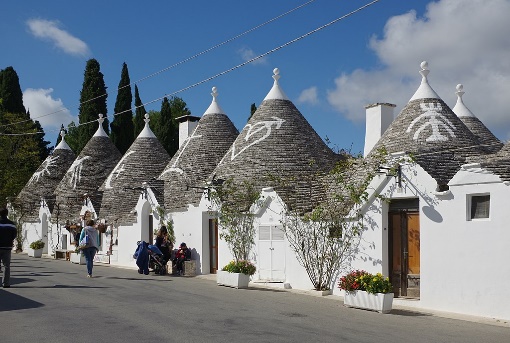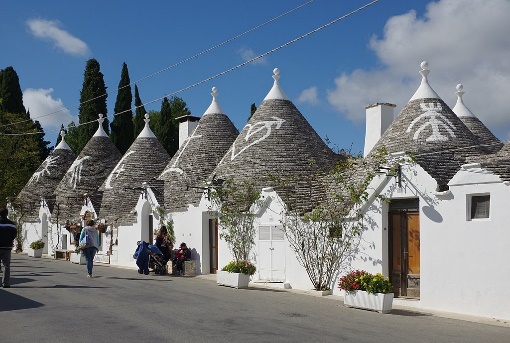
I Coni dei Trulli

Trulli di Alberobello
(Foto di Berthold Werner, CC BY-SA 3.0, https://commons.wikimedia.org/w/index.php?curid=60159414)
Una delle caratteriste dei trulli di Alberobello è che ognuno reca in cima, oltre ad un pinnacolo scolpito, anche uno strano disegno, si tratta di simboli di diversa natura, alcuni rimandano a millenarie tradizioni pagane o esoteriche, altri invece alludono all’iconografia cristiana. Vengono realizzati con il latte della calce direttamente sulle chiancarelle, cioè le pietre che compongono il cono del tetto. Questi disegni servivano non solo a distinguere le famiglie proprietarie dei trulli, ma assunsero una valenza apotropaica, si credeva che allontanassero il malocchio e propiziassero un buon raccolto. I simboli più comuni e facilmente riconoscibili sono: il candeliere ebraico, il simbolo del Sole-Cristo, il cuore trafitto di Maria che allude alla Passione. Altri simboli pagani molto comuni sui trulli di Alberobello sono quelli del Toro, di Giove e di Venere.
